Following near extinction and a Hollywood-like drama, this upscale heritage breed from Habsburg-era Hungary is reaching ever more gourmets around the world.
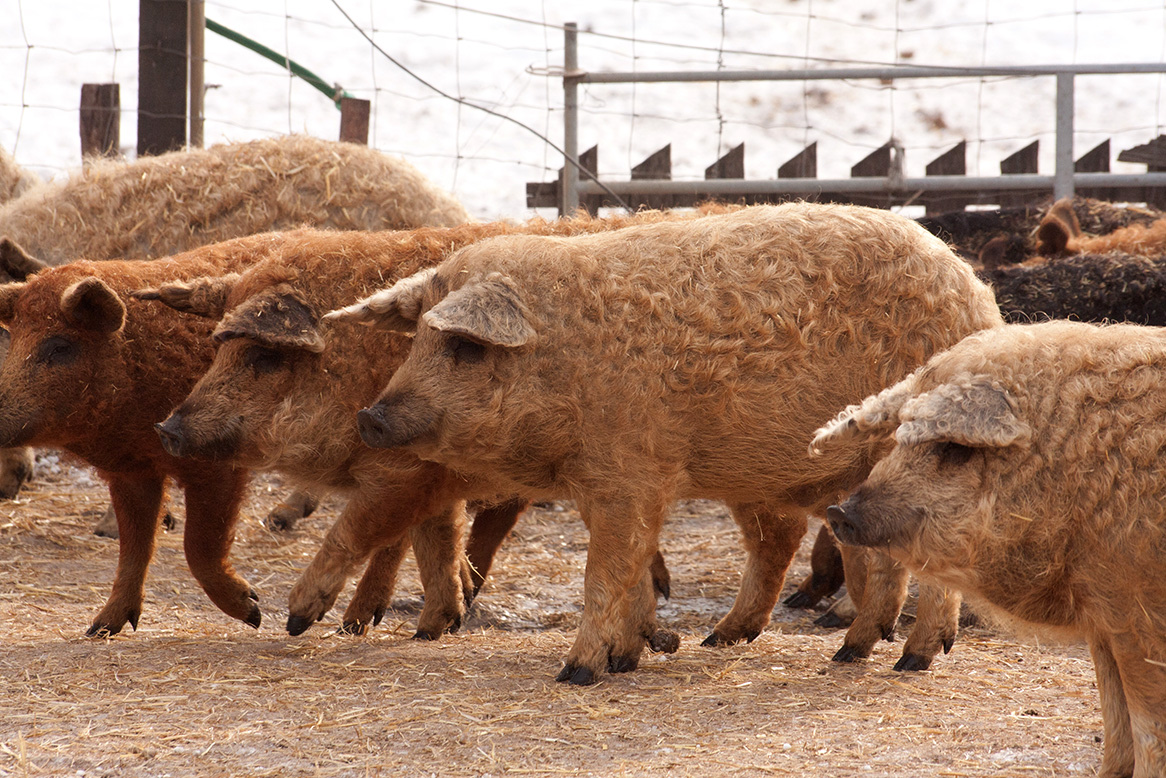
Like many food-loving Hungarians, I was vaguely familiar with the Mangalica, an unusual, curly-haired pig that looks like an oversized sheep and produces a marbled and expensive meat that chefs around the world wax poetic about. Mangalicas are regularly mentioned alongside their Mediterranean cousins, the Ibéricos — the black-hoofed pigs from Spain, some of which roam in open pastures, feed on acorns, and produce the famed Jamón Ibérico de Bellota.
An initial internet search on Mangalica quickly demonstrates the near cult status of the meat. Claims range from the scientifically dubious (“Mangalica fat is the healthiest of all pork fats”) to the downright bizarre (“I want to shave [Mangalica salumi] and drape it around my body”). I was intrigued. This heritage breed originates in my native Hungary, with many of the country’s more than 200 Mangalica farms concentrated in the northeastern part of the country. I decided to investigate further.
The first person to help me navigate through the world of furry pigs was Zsóka Fekete. She’s a young Mangalica farmer who recently became a minor celebrity in Hungary when her story made the rounds in the local media: After graduating from a leading university and settling into a cushy office job in Budapest, she decided to return home to her family farm and raise Mangalicas. Since rejoining the family business, her stock of pigs has grown from 20 to more than 360, with plans to expand further.
“The magic of Mangalica lies in its fat,” said Zsóka. She stared ahead at the road as we drove from Hajdúböszörmény’s nondescript train station — where she picked me up after my three-and-a-half hour journey from Budapest — to see her woolly-fleeced pigs. Upon arrival, Zsóka chained up her dogs, who welcomed me with a disconcerting growl, and we walked into the first of two hushed, sun-filled barns connected to spacious outdoor pens.
The barn had a thatched roof, and not a hint of stench. An alfalfa-munching pig ambled over to greet us; she had comically wild hair and tiny black hooves. The rest of her group happily wallowed in a patch of mud. In another pen were impossibly cute sheep-piglets tugging at their mother’s teats. The animals were alert, but there was a noticeably calm atmosphere here — none of the stressful commotion you see on television of packed factory farms.
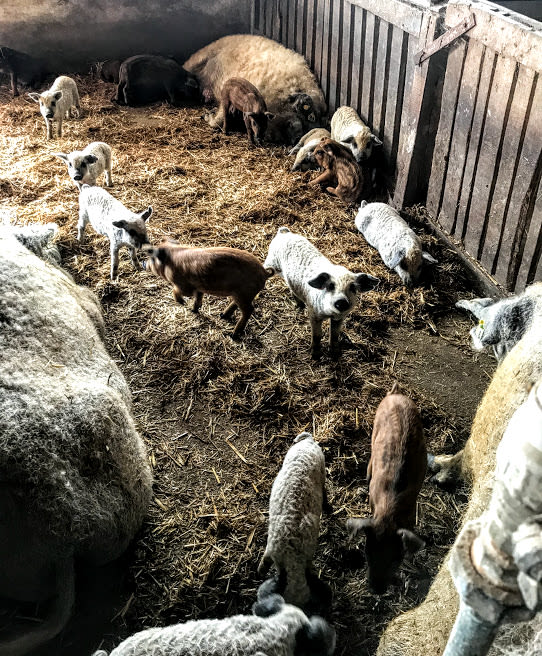
Zsóka wasn’t the only person to highlight Mangalica’s unique fat. “I usually cook Mangalica with its own fat to intensify its distinct flavor,” said Eszter Palágyi, former head-chef of Costes, Budapest’s first Michelin-starred restaurant. Inherently, Mangalicas are a much fattier breed than factory-produced varieties — even more so than purebred Ibéricos. This means that streaks of fatty “marbles” pierce through their muscles, producing a spider web pattern of white lines that can resemble Wagyu meat. Even the color of Mangalica meat is beef-like, noticeably darker than regular pork varieties.
“The fat lends a soft, silky bite to the meat that doesn’t overpower but lasts in the mouth longer than other pork. The taste is deeply porcine, bursting with umami,” said Péter Tóth, the President of the Hungarian Mangalica Association. I asked him, ignorantly, whether this was because of all the acorns they eat, like the Ibericos.
“No,” came the answer. “Foraging for acorn and roaming freely in the dehesa is great marketing for Ibericos, but in reality less than ten percent of them has ever seen an acorn,” he explained. Mangalicas feed on a mix of grains, mainly barley and wheat, but also sunflower seeds, corn, alfalfa, and seasonal plants (it’s all natural, since GMO crops are banned in Hungary).
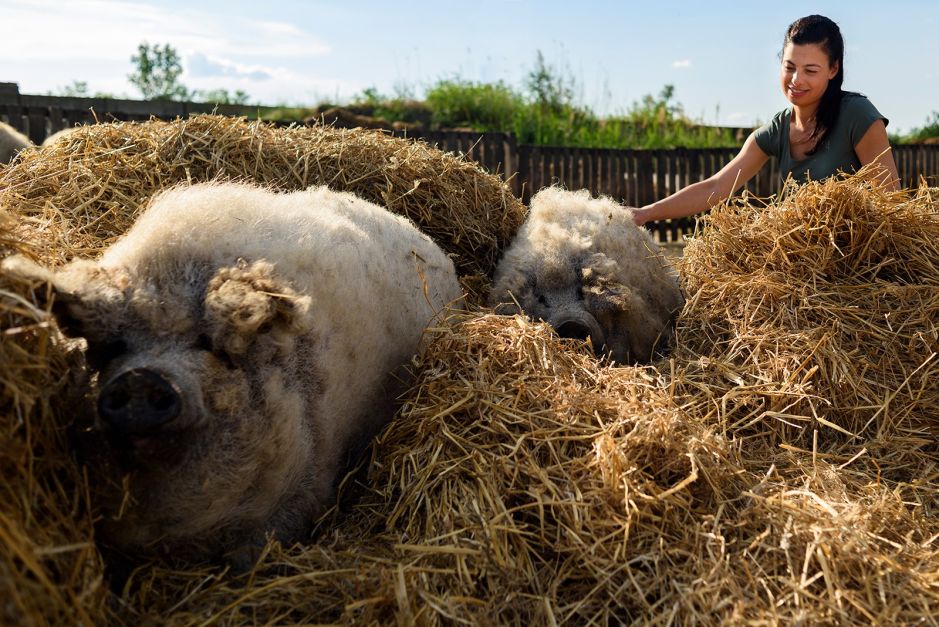
This luscious, buttery fat makes Mangalica pork especially versatile. On its home turf in Hungary, most of it becomes bacon and sausage, be it cured, smoked, cooked, or roasted. As with many things here, they come with sweet or spicy paprika seasoning. Zsóka drives up to Budapest every other week to sell her processed Mangalica products at the Lehel Market, one of the main indoor markets of the city. (The line to her stall, as I have learned, can be maddeningly long.)
In Japan, where Mangalica is a revered delicacy not unlike Kobe beef, marbled cuts of loin are used for tonkatsu (deep-fried pork cutlets) and strips of pork belly land in shabu shabu (hot pot). Spaniards, true to tradition, age Mangalica legs and shoulders for at least 24 months before the jamón Mangalica achieves an intensely concentrated flavor and transforms into thinly sliced appetizer treats.
In the United States, where top restaurants like Blue Hill At Stone Barns, Eleven Madison Park, and The French Laundry have served Mangalica pork over the years, chops reign supreme, according to California-based breeder Tim Winkler. “But with Mangalica, charcuterie is the most impressive: dry-cured muscles, lardo, and ‘nduja.” His client, Incontro Cured, uses Mangalica pork to make Spanish-style hams and classic Italian salumi like coppa and culatello.
My content is free and independent. If you've enjoyed this article, please consider supporting me by making a one-time payment (PayPal, Venmo).
The beginnings of this fluffy animal go back to the 1830s, when a Serbian prince gifted several curly-haired Sumadija pigs to Archduke Joseph, Hungary’s highest-ranking official. The Habsburg archduke went on to crossbreed these fat-rich varieties with the sturdy Hungarian Bakonyi breed, and the offspring of this cross-border pig marriage, Mangalica, quickly became Hungary’s most popular hog — it withstood the cold Hungarian winters and yielded thick layers of precious fat.
Back then, lard was indispensable to cooking and preserving food (marbled meat was just a nice ancillary benefit). But by the 1950s, with the advent of margarine and modern refrigeration, lard fell out of favor. And when commercially produced lean meats became all the rage — no matter how dry or flavorless — the tide had totally turned against the Mangalica. By 1991, only 198 of them remained in all of Hungary, pushing the species to near extinction.
Enter Mangalica’s unlikely saviours: Juan Vicente Olmos Llorente, scion of the Monte Nevado ham-processing family business in Spain, and Péter Tóth, then a young Hungarian agricultural scientist. Mr. Olmos, looking to expand his father’s business, enlisted the help of Mr. Tóth, who spoke Spanish, to track down pigs in Hungary that were fatty enough for dry-cured, aged ham, similar to the Ibéricos they were producing back home. Mr. Tóth went searching. He later mentioned to Mr. Olmos that he had tracked down some Mangalicas in a state-owned farm, but warned him that the pigs were fast disappearing because nobody wanted them.
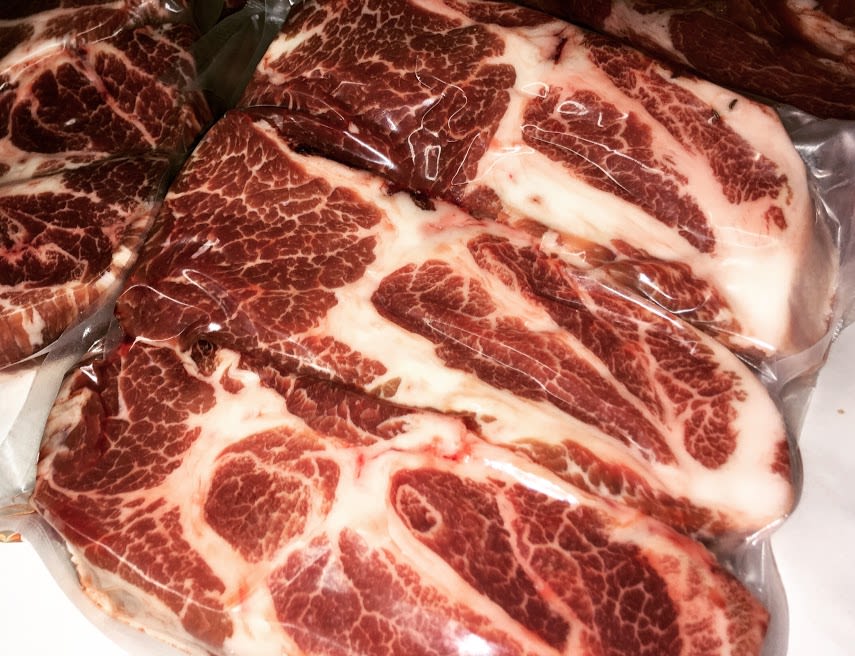
Curious, Mr. Olmos flew in from Spain and had one of the Mangalicas slaughtered to examine and taste its meat. He was convinced that this was what he had been after and shocked that Hungarians were allowing this breed to die out. “By the end of the day, he and his father made a theoretical decision to go ahead with the Mangalicas,” remembered Mr. Tóth, who would be in charge of building up the Hungarian operation: finding, buying, raising, and professionally breeding the animals, something that hadn’t been done in decades.
Fast forward 28 years, there are now more than 100,000 Mangalicas globally, two-thirds of them in Hungary (this still pales in comparison to the more than five million Iberico pigs being farmed today). The company of the Spanish-Hungarian duo, Olmos & Tóth, exports hundreds of tons of Mangalica legs annually to Spain for dry-curing. Mr. Tóth has become a globetrotting Mangalica ambassador, and one of the people to set in motion the Mangalica renaissance internationally.
Today, there are Mangalica associations in places like Japan, France, Norway, Canada, and the United States. In fact, the U.S. is home to the second largest Mangalica stock in the world after Hungary. This is mainly because of Mosefund, a state-of-the-art pig farm in New Jersey owned by Chris Andersen, an 80-year-old investment banker, who has set his mind on introducing the taste of Mangalica to the American public (at least to those willing to shell out $140 for five pounds of pork chop).
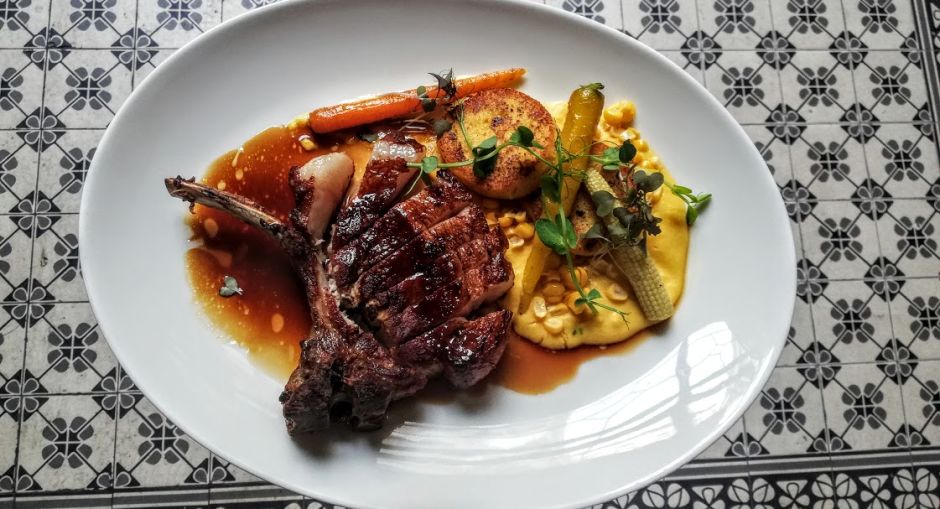
Part of the reason Mangalicas are so expensive is because they’re costly to raise. First, they grow slowly. Unlike white pigs that are slaughtered when six months old, Mangalicas take more than a year to fully develop their coveted intramuscular fat. In addition, they produce only five or six piglets per litter compared with ten to twelve for other breeds. They also require outdoor space to roam freely, in order to strengthen their muscles, which further aids marbling.
Even slaughtering these pigs is more expensive — scalding off their tufted furs is a logistical nightmare for abattoirs, many of whom refuse to take them (in the past, people used their wiry bristles to make brushes). “My pigs always need to be the last one for the day because they take longer to clean and their hair clogs the machines,” says Róbert Lackó, who raises more than 300 Mangalicas on open pasture in the stunning Zebegény hills in northern Hungary, near the Danube and the Slovakian border. (When I asked him why he doesn’t fix the bumpy dirt road leading to his farm, he said, with a mischievous grin, “I don’t want people to come here and ruin the landscape.”)
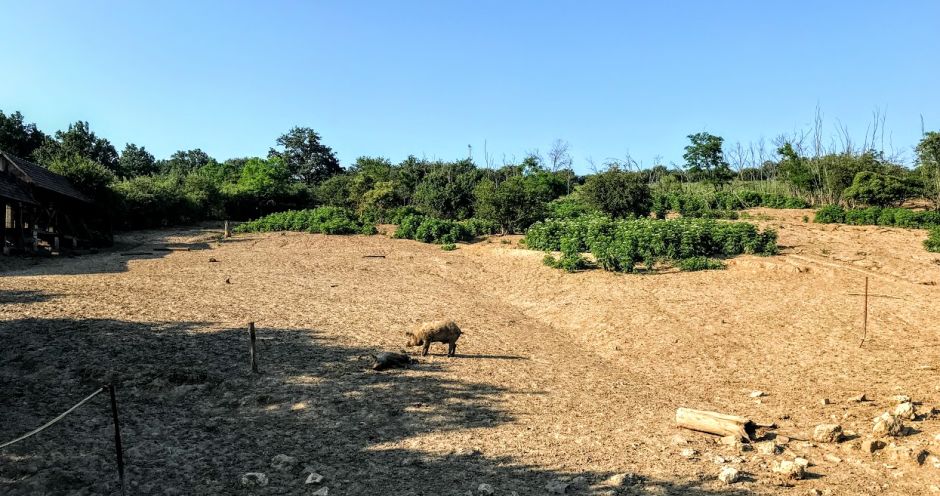
Another challenge for breeders is figuring out what to do with the leftover fat. The delicately marbled meats account for only a third of a purebred Mangalica’s body mass, with most of the remainder consisting of subcutaneous fat, the stuff under the animal’s skin that ends up as bacon, lard, and pork rinds. Tasty they may be, it’s a challenge to sell them profitably.
“Loins sell out months in advance. I can never have enough. But I literally have tons of lard sitting in my storage facility. Do you know anyone who wants to buy it?” Zsóka asked me in jest. Péter Tóth says this is a common challenge of fatty breeds. “Spanish Iberico producers are flooding the EU with low-priced fatback."
But Róbert Lackó senses a change in attitude. Whereas a few years ago local restaurants would only order the classic cuts — neck, loin, spare ribs — chefs have started to get creative and capitalize on Mangalica’s depth of flavor. “Now they want everything. Bones for soup broths, lard to cook with, ears, and even feet for pig trotters.”
The global Mangalica market is difficult to estimate because there are a large number of hobby breeders with only a few pigs who don’t always register with their respective national Mangalica associations. Also, much to the frustration of the industry, small farmers often inbreed or sell hybrid meat as Mangalica, and hence damage the product’s reputation. In addition, annual consumption can fluctuate meaningfully based on external factors, like the current African swine fever virus, to which some countries, like Japan, reacted with a blanket ban on all pork imports.
Nevertheless, Mangalica production is likely near an all-time high. In an emailed comment, a representative of Mosefund claimed that they are “unable to keep up with growing demand” in North America. Apart from a gradually increasing awareness, it’s possible that changing food science is also playing a role: As conventional wisdom about the benefits of a low-fat, high-carb diet loses ground, a juicy Mangalica chop may lay even greater claim on the dinner table.
In Hungary, the government has jumped on the Mangalica train, realizing its commercial potential abroad. After all, apart from Tokaj wines, Mangalica is among the few high-end gastronomic products from the country with international recognition. In 2004, the government designated Mangalicas a Hungarian national treasure and has since been providing financial support to local farmers who commit to raising them.
Recently, the Ministry of Agriculture co-funded a successful project to bring back the extinct black Mangalica (originally, there were four kinds — blonde, red, swallow-bellied, and black — but the black breed died out in the early 20th century). They also sponsor the annual "Mangalica Festival” in downtown Budapest: Picture a multi-day farmers market monopolized by smoked sausages, roast pork, and pálinka, a potent Hungarian brandy. There are also Mangalica tasting menu dinners around the world, most recently in Macau, to help educate chefs.
But even as the future looks bright for these furry pigs, Péter Tóth never misses a chance to remind his audience that “the only surefire way to protect the Mangalicas is by eating a lot of them.”